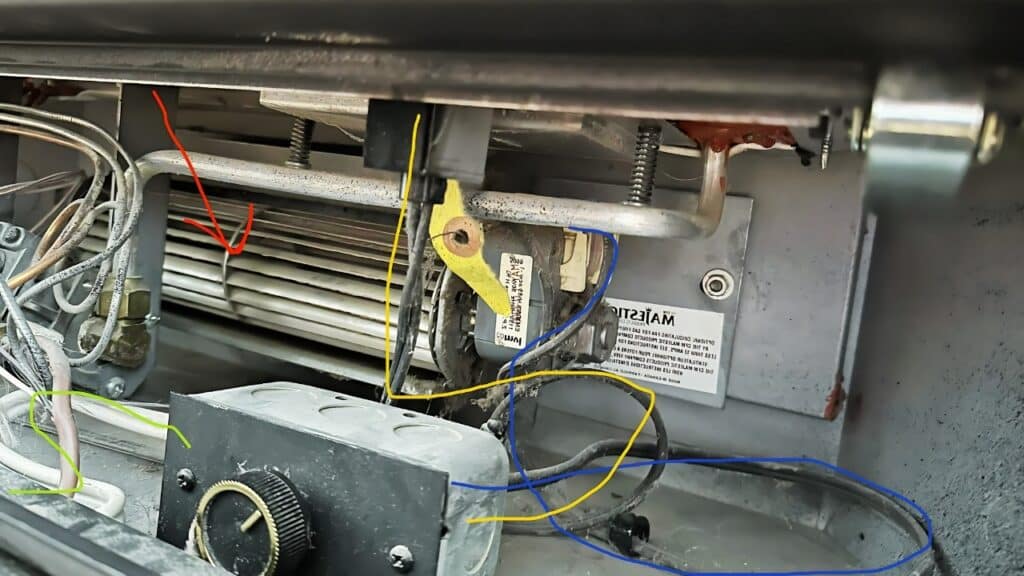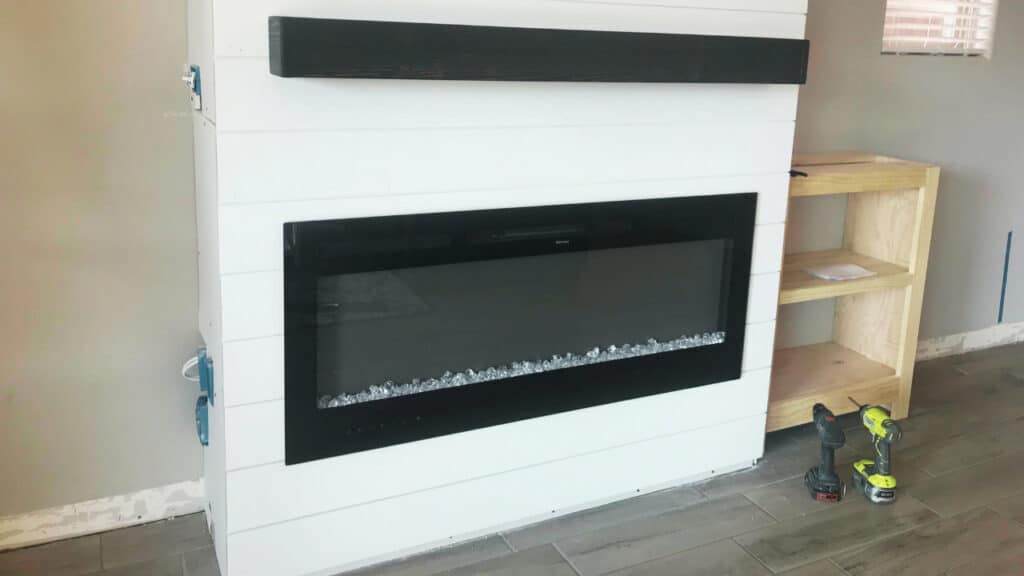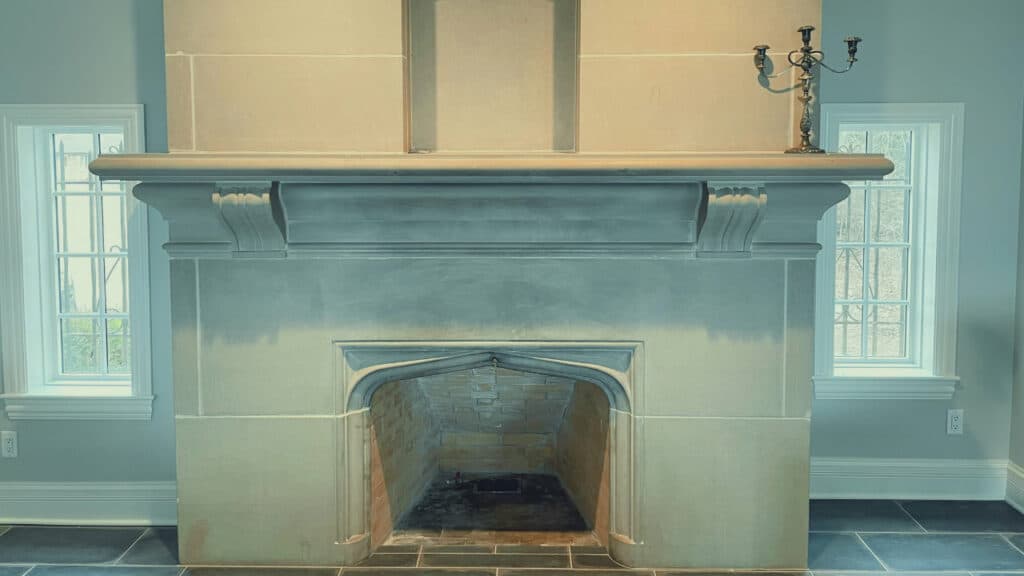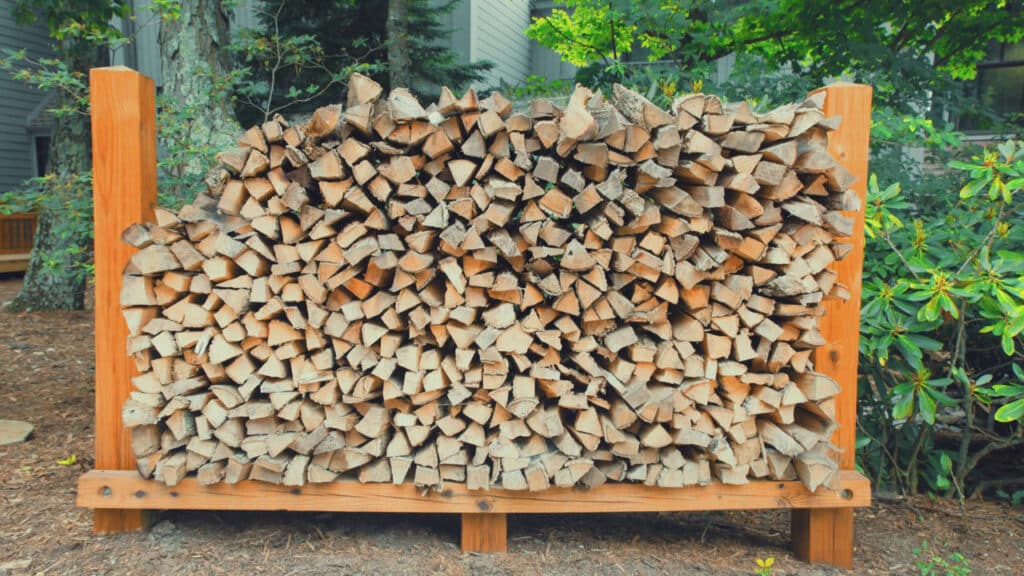When the temperatures drop and winter starts to set in, having a pellet stove is a great way to keep your home warm and inviting. However, like any home appliance, they require regular attention and care.
Proper pellet stove maintenance not only ensures optimal performance but also minimizes potential repairs
So, what exactly are the essential aspects of pellet stove care, and why are they so crucial? Let’s explore.
What Maintenance Does a Pellet Stove Require?
Like our cars and homes, pellet stoves require periodic maintenance to run efficiently and safely. To ensure your stove runs smoothly, we split the maintenance tasks into three categories: daily and weekly, monthly and yearly.
Here is a breakdown of what each category entails:
Daily & Weekly Pellet Stove Maintenance
Did you ever have one of those grade school teachers who said, “A little bit every day is better than a lot-of-bit some days”? Though you may be rolling your eyes right now, it holds true for several pellet stove tasks. To make sure your stove is functioning properly on a daily or weekly basis, you should be:
- Cleaning the burn pot
- Emptying ashes (depending on size and fuel quality)
- Cleaning the glass for a clear view of the fire
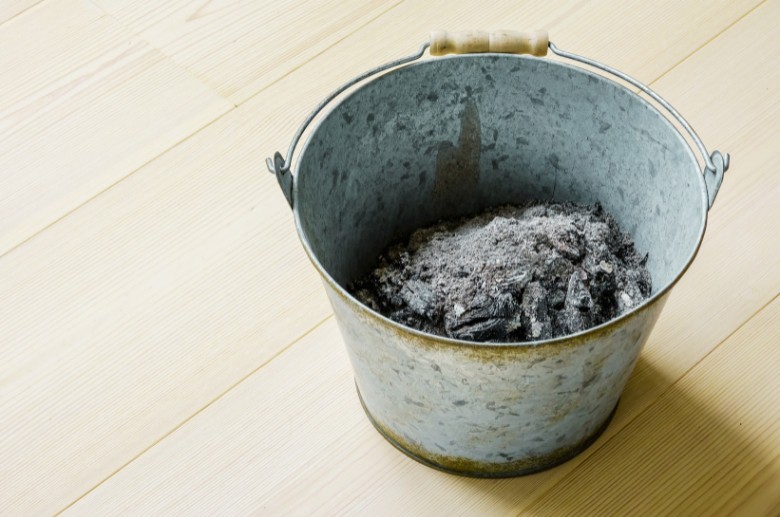
Pellets are clean-burning fuel, so you don’t have to do a deep clean every day, but it’s worth regular maintenance. By using high-quality pellets, you will find that the clean-up is much easier, ensuring your pellet stove achieves optimal performance.
The main differences between high-quality and low-grade (or bargain) pellets are ash content, efficiency, and heat production.
——
Do You Need to Hire Chimney & Fireplace Expert?
Get free quotes from qualified experts near you. No commitment required!
——
- The optimal ash content is 1% or less. Lower ash content leads to less creosote buildup, requiring fewer cleaning and maintenance tasks.
- A BTU rating of 8,000 – 8,400 is the optimal range for pellets. High-class pellets are denser and bigger than bargain brands, so they last longer in the burn pot.
- Remember the moisture content. Choose fuel pellets with 8% moisture or less to ensure your pellet stove flames burn brightly — not smolder.
Store your pellets in a dry and cool place to maintain quality. If you’re buying in bulk, remember to check them with a pellet moisture meter. It’ll save you the hassle of cleaning up a messy mistake.
Monthly Pellet Stove Maintenance
When the cold weather starts to hit, and your stove is up and running almost nonstop, remember to give it extra attention once a month. At least every four weeks or after burning one ton of pellets, ensure to:
- Clean the blowers and fans
- Inspect gaskets around the door and hopper lid
- Remove all signs of accumulation and debris from pellet loops
- Vacuum up any ash or pellets that may have accumulated in the unit
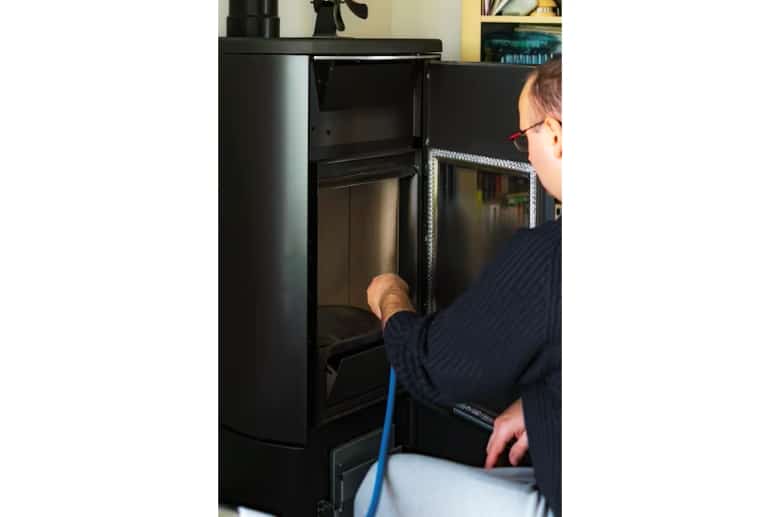
While it’s not necessary to perform a full-scale tear down every month, depending on where you live, it’s probably a good idea to take an in-depth look inside the unit’s casing and clean things like filters, ducts, and vents.
Yearly Pellet Stove Maintenance
At the end of every burning season, giving your pellet stove the deep cleaning and maintenance it needs is important. This will ensure the unit is properly serviced for long-term performance and prevent common problems like clogs or faulty equipment.
Here’s what you should do when it’s time for a deep cleaning session:
- Empty and clean the pellet hopper, burner chamber, and ash pan
- Check all connections for cracks or other wear & tear
- Check thermostats, pressure switches, and vacuum sensors to make sure they are functioning correctly
- Clean the glass door, fire brick lining, and metal walls of the firebox
- Clean combustion/convection fans and re-lubricate them
- Clean or vacuum the chimney to remove all soot and debris
- Test venting, including louver operation (so that outdoor air is let into your stove)
- Test the igniter, mixing fan, and blower operation to make sure they are in working order
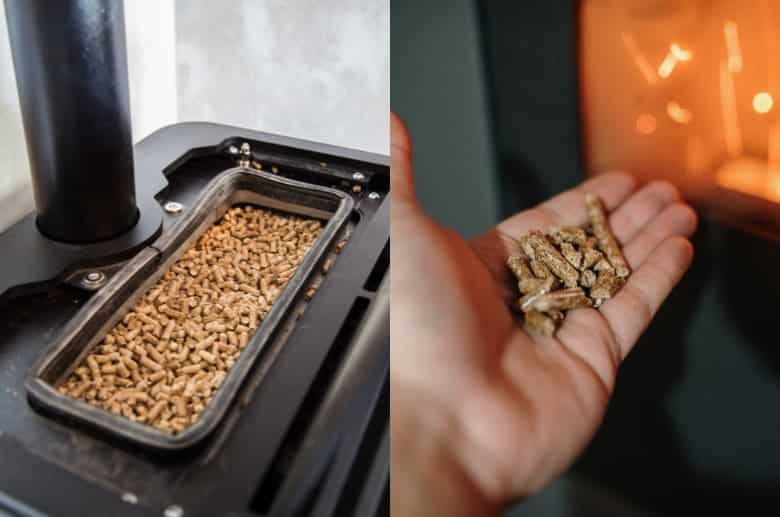
These annual cleaning sessions can be huge time and money savers when it comes to repairs down the road. They can also help extend a stove’s life for many years to come, making them perfect investments in the long term.
Clearing the hopper of unused pellets can be done in one of three ways, depending on your type of pellet stove.
- If your grill has a slide just under the hopper, place a bucket underneath and pull the slide and allow all pellets to drop into the bucket.
- If your grill has a release door on the back of the hopper, place a bucket underneath it, unscrew the lock, and open the door, allowing the pellets to fall into the bucket.
- If you don’t have either of these release mechanisms, use a small bucket to scoop out pellets. Then use a wet-dry vacuum to remove the remaining pellets from the hopper and the auger tube.
To clean the burn pot, with the help of a fireplace poker, break up any pellet jams when the stove is cool and vacuum up as much debris as possible. You should also clean and wipe away any ash from the glass and walls of the stove.
Tuning up the ventilation system usually includes exposing the combustion blower wheel and flue. Depending on your pellet stove type, these instructions are available in the user’s manual. It generally involves using a paintbrush to clean the blower wheel and being sure not to bend any fan blades.
You can use a flue brush to clean the flue, but make sure not to reach too far in since it could damage wiring or exhaust sensing probes if your stove has one. When you’re done with this process, remember to vacuum the area before reassembling it and testing the unit’s electrical sensors and igniter for continuity.
Professional Maintenance
Did you scroll through all that maintenance and now feel overwhelmed? If so, don’t stress—you can always call a professional service for a tune-up or deep cleaning. Pellet stove experts will often:
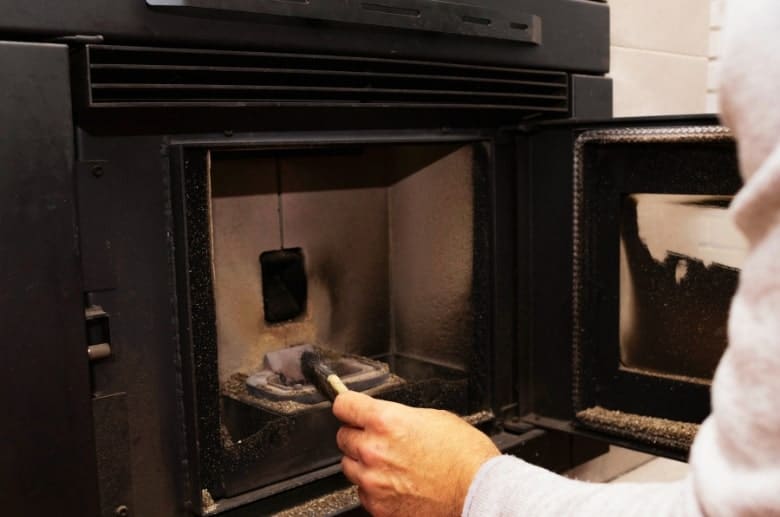
- Do a full inspection of the system to check for irregularities
- Clean the burn pots of ash and any residue that may accumulate
- Check for cracked or broken parts and replace them as needed
- Inspect gaskets, seals, and other components for optimal performance
- Adjust air intake controls as necessary
- Check the overall operation of the stove to ensure it is working safely
Pellet stove chimneys need some cleaning too. Dirty or obstructed chimney flues can prevent smoke from exiting the home properly, leading to possible carbon monoxide buildup. A professional can inspect or clean metal flue pipes and watch for rust or corrosion.
——
Do You Need to Hire Chimney & Fireplace Expert?
Get free quotes from qualified experts near you. No commitment required!
——
Benefits of Routine Maintenance
What’s the point of all this work? Routine maintenance is key to ensuring your pellet stove performs well and remains a safe, efficient heating option.
Here are the most significant benefits of completing regular pellet stove maintenance:
Improved Efficiency
Who doesn’t want the highest efficiency pellet stove can give? Regular cleaning ensures consistent heat output and longer burn times. Plus, it removes residue and creosote buildup to ensure maximum airflow throughout the heating system.
Increased Safety
Regular maintenance helps ensure your unit runs properly and remains as safe as possible. It eliminates any risks related to burning wood, such as toxins created from creosote or incomplete combustion that produces carbon monoxide.
Lower Repair Costs
Many of the issues associated with a poorly maintained pellet stove are very costly to repair—or worse, may require the purchase of a new stove. But regular cleaning and maintenance can save you trouble and money in the long run.
Longer Lifespan
What do almost all products have in common? They require regular maintenance to last as long as possible. A well-cared-for pellet stove should serve you for many winters to come!
Troubleshooting Common Pellet Stove Issues
Are you ready to put your pellet stove maintenance skills to work? Of course, things don’t always go as planned. Here are some common issues that can pop up suddenly and scare you—and how to fix them.
Problem 1: Low Heat Output
If your pellet stove isn’t producing enough heat, the first thing to check is the Pellet-to-Air Ratio Adjustment. If the flame appears too small, the ratio is either too rich or too lean. Try adjusting accordingly. Depending on your stove model, you can make minor changes to the settings to get more heat out of it.
If your pellet stove produces adequate heat but doesn’t seem enough, try lowering your thermostat a little more and giving the unit some time to regain an optimum temperature.
However, if it blows cold air, it could be a sign of clogging in the convection fan or an issue with the blower motor.
Problem 2: Poor Pellet Quality
We all know the saying: “You get what you pay for.” Low-quality pellets often contain more bark and sawdust, which accumulates quickly in the burn pot and primer tray. When the burn pot is overfilled with ash or other materials, the air-to-pellet ratio goes off and can severely damage your stove.
Low-grade pellets are also more likely to clog the auger or create bridging in the fuel hopper. As a rule, always switch to a higher-grade pellet for better performance and longer-lasting support.
Problem 3: Ignition Failure
This is one of the most frustrating problems homeowners face, especially when your pellet stove has just started running out of pellets, and you aren’t paying attention until it’s too late.
The main culprit for ignition failure is the weight of the pellets in your fuel hopper. If you have an auger-fed pellet stove, ensure that the weight of the pellets is sufficient to push them down to the auger. Empty the hopper and pour in new pellets. Then turn it on to give the stove another go.
Other causes for failure could be damp pellets, a faulty igniter, an impaired auger motor, or too much draft in the boiler. These all require different fixes and may be best left to a professional company for proper troubleshooting.
Problem 4: Excessive Ash Buildup
Although you’re cleaning your stove regularly, there should never be a large accumulation of ash and debris. Ash buildup can come from burning low-quality pellets, which may accumulate in the burn pot faster than high-grade ones. Ensure you’re using a quality pellet that generates little ash.
And to avoid any buildup in the burn pot, you can increase the stove’s temperature and lower the airflow. This will consume the ash faster and prevent it from accumulating. You can also try reducing the number of pellets crossing the burn pot if possible.
Another cause could be a clogged air filter or an air leak which affects the ratio of air to pellet. Check the filter and all related components to ensure no clogging or leak.
A Better Way to Heat Your Home
Pellet stoves are a marvelous way to heat your home and save money on energy costs—just as long as you remember their maintenance needs. Pellet stove maintenance can initially seem overwhelming to the novice enthusiast, but over time, you’ll soon become comfortable performing the necessary regular tasks.
Are you worried about all the added maintenance? Don’t be! We can help you connect with a professional pellet stove technician in your area to help manage all the upkeep. Not only can they help ensure your pellet stove is running safely and efficiently, but they also ensure it can provide you with the warmth and comfort you need for many winters to come!

